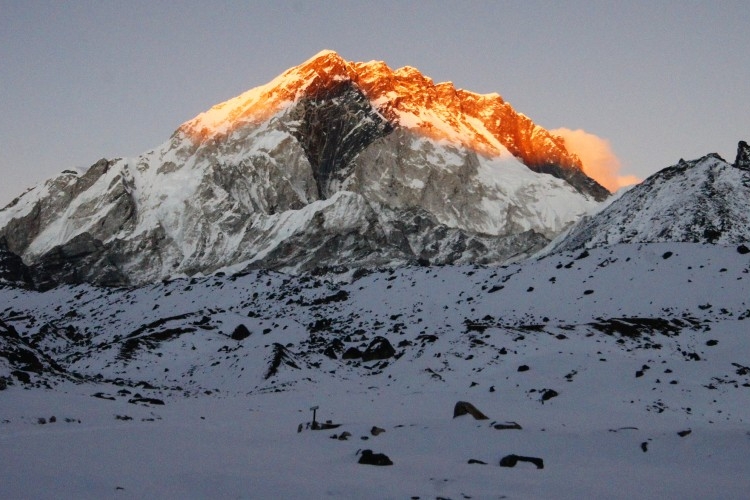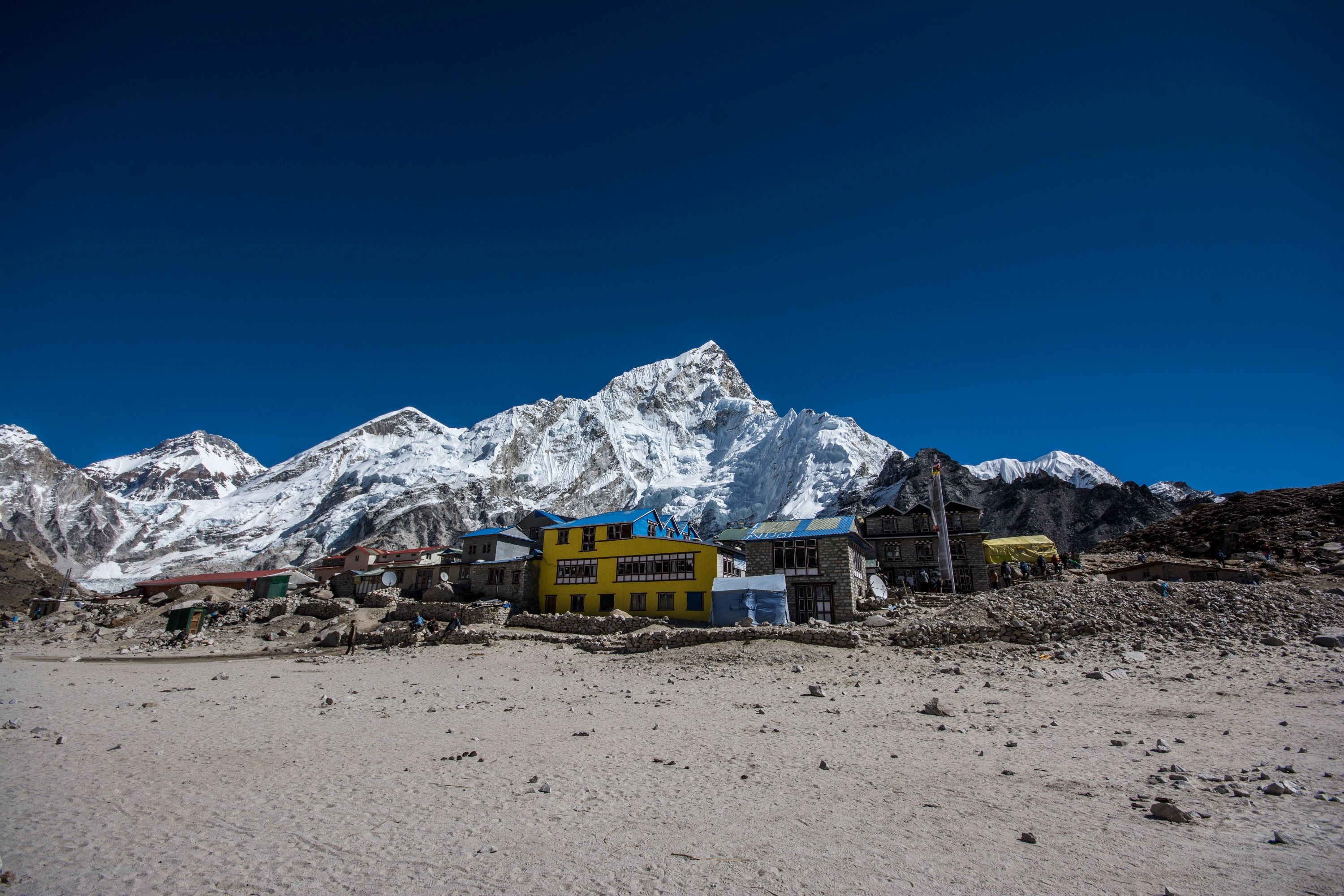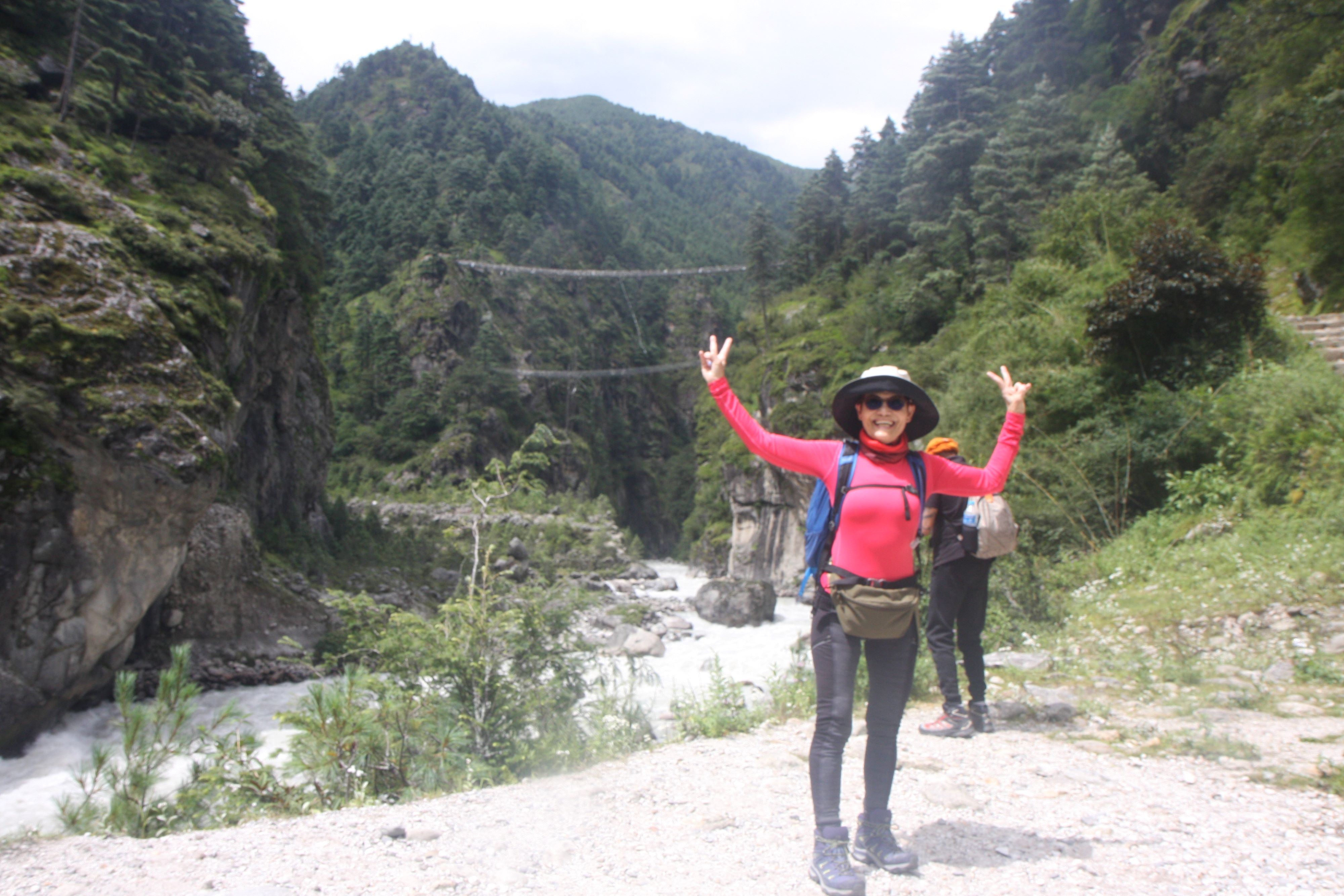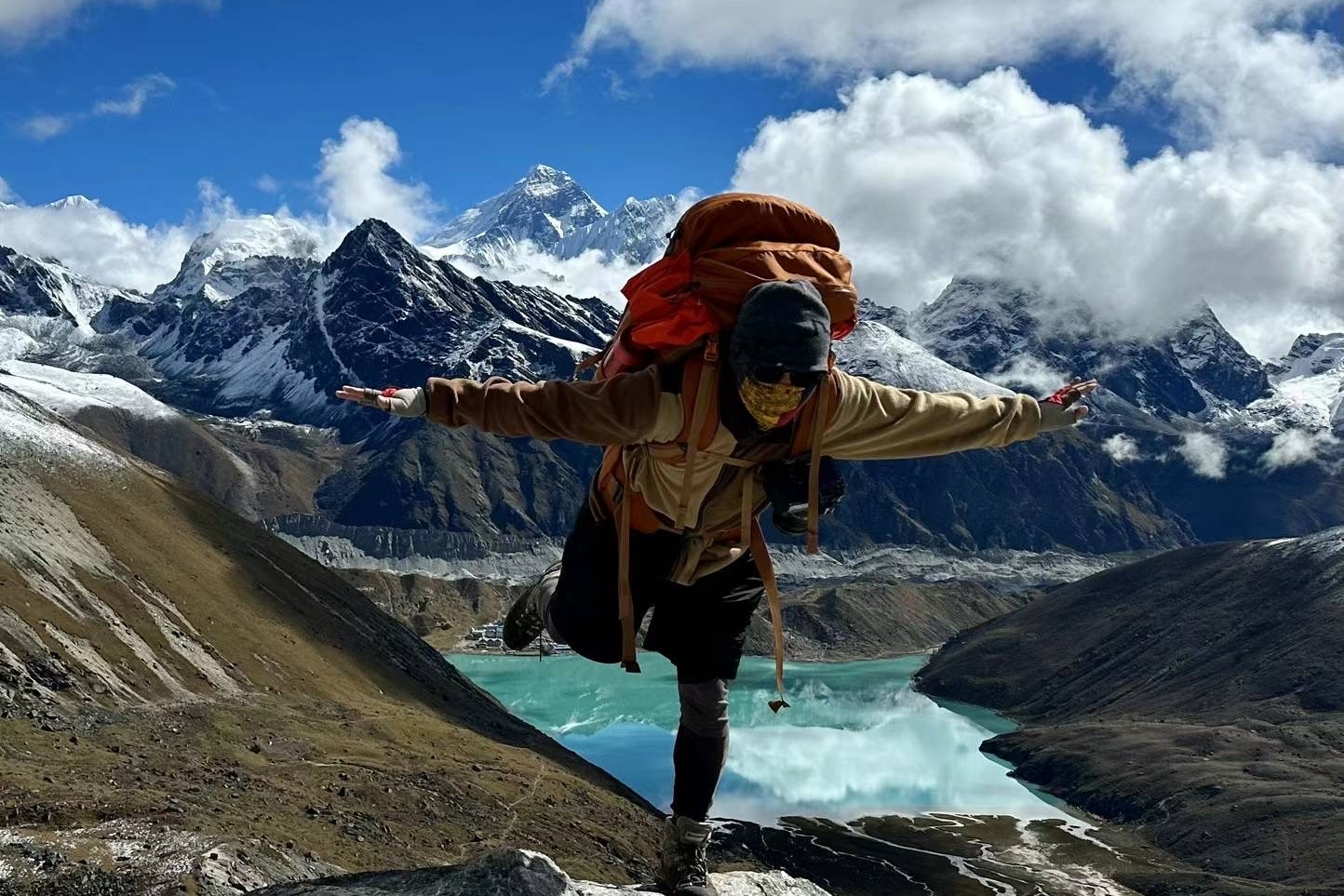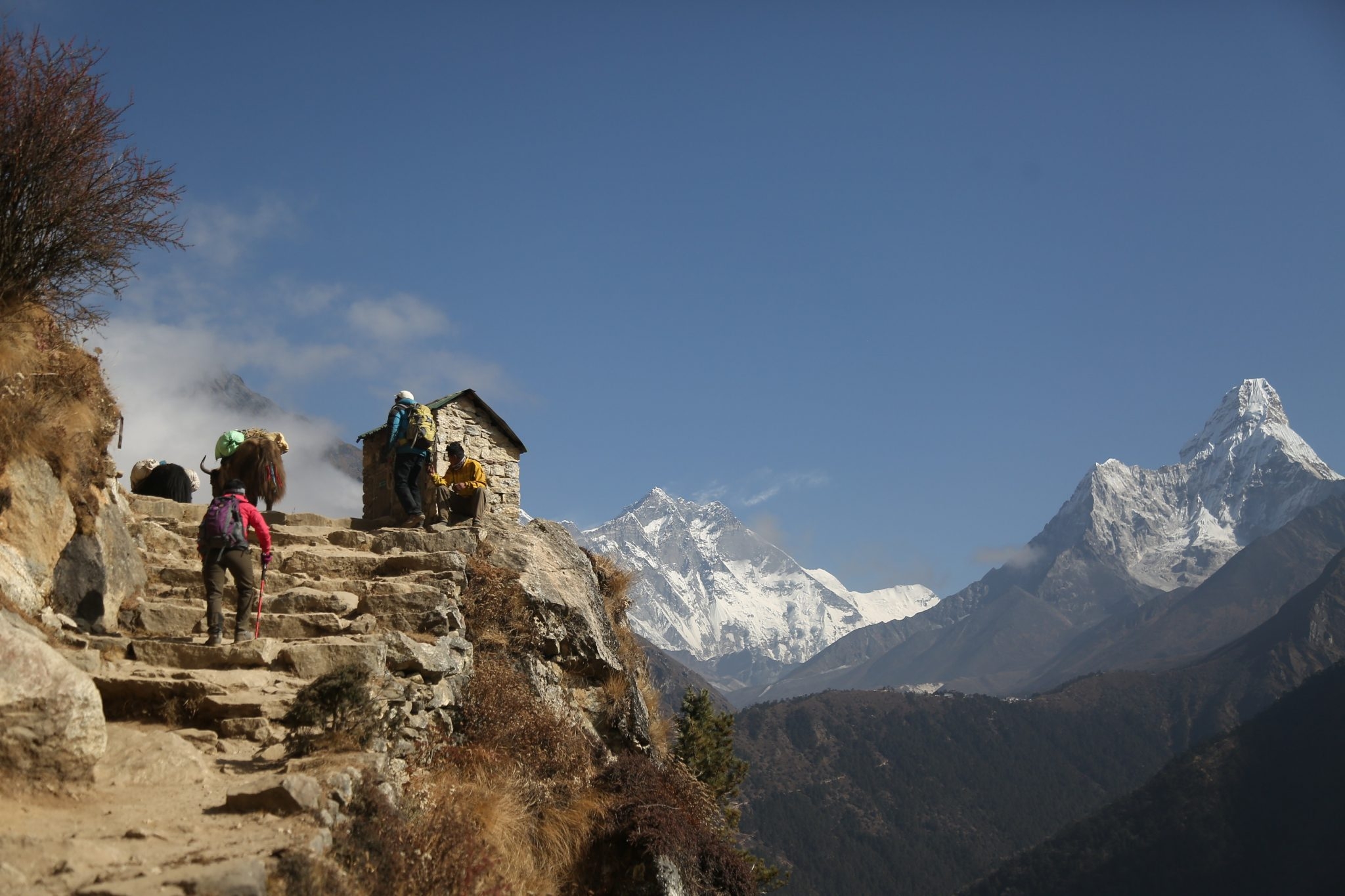

The guests shall be greeted by a representative of Bharal Adventure who is responsible for taking them to their hotel upon their arrival. The dinner comprising of authentic Nepali food is the preliminary firsthand experience of the Nepali culture that the company offers you.
A guided tour around the historically and spiritually significant landmarks in Kathmandu will be scheduled after breakfast. These landmarks constitutes of Pashupatinath Temple, Swayambhunath – the Monkey Temple, Boudhanath and Kathmandu Durbar Square. In the afternoon, pre-trip discussion session will be arranged enabling the interaction between trek leader, crew and the guests.
An early morning flight from Kathmandu rewarded by breathtaking views of green and white mountains takes the team to the gateway destination, Lukla from where the trek begins. After assembling other crew members in Lukla, the convoy shall commence their trek through the prosperous village of Lukla across Cheplung village from where few hours descend will take us to Phakding.
A pleasant walk through Dudh Koshi River rewarded with the magnificent view of Mt. Thamserku (6,608m/21,675 ft) at Benkar village begins just after breakfast. Passing through the villages, trails and bridges takes the team to the entrance of Sagarmatha National Park at Monjo. Descending from there to Jorsale village, team starts the climb to Namche Bazaar as they arrive at Hillary Suspension Bridge traversing through the confluence of Dudh Koshi and Bhote Koshi. A break at Chautara is made to admire the spectacular views of the highest mountains in the region. An hour walk further and the team reaches the trading center of the region – Namche Bazaar.
Enjoying the marvelous views of Mt. Everest, Mt. Nuptse, Mt. Lhotse, Mt. Ama Dablam and close up view of Thamserku, the trek from Namche Bazaar to Tengboche comes to an end. The team treks towards Pangboche and then descends to Kayangjuma. After passing through Sansa, the major trail junction to Gokyo Valley and Everest Base Camp, the team disembarks at Phunki Thenga for lunch and rest. It requires a short tough climb from here to Tengboche. Lunch is provided at Phunki Thenga.
The day begins with the flawless view of the monastery at Tengboche with the mountains at its backdrop. The team will take the upper trail to Pangboche village passing through a number of Chortens and Mani walls and small hamlets. The afternoon will be made blissful with a walk north to Pheriche or eastward trail beneath the towering north face of Mt. Ama Dablam. A moderate walk to Imja Valley, descending through the confluence of the Lobuche River followed by the steepest climb of the day takes the team to Dingboche.
Passing through the stone-walled fields and Imja Khola Valley, we enter the glacier moraines amidst the towering Himalayas from where the trail continues to Bibre, a yak herdsman place. From here, we enjoy the tremendous view of Ama Dablam and the Amphu Labsa mountains and move ahead along the trail intersected by icy steams continuing our walk for around half an hour before reaching Chhukung, surrounded by glaciers and Himalayas. From here, we can hike further to a rocky knoll of Chhukung Ri offering the dazzling views of Lhotse, Island Peak, Ama Dablam, Makalu and other peaks.
We will be staying at Chhukung for the night before crossing Kongma-La Pass so as to take proper rest as well as acclimatize ourselves better. We will trek to Chhukung Ri today for acclimatization, which is located directly above the Chhukung village. From the top, we will view the enchanting sights of the Himalayas such as Ama Dablam and Amphu Labsa peaks before descending back to Chhukung for the night.
Beginning our trek early in the morning, we reach the highest part of the entire trip, Kongma-La Pass. There are two ways to that we can take, among which the first trail goes over a hill which is to the northwest of Chhukung over the Nuptse Glacier moraines while the second walks back to Bibre and follows the trail above the Niyang Khola. The top of the pass is marked by cairns and Buddhist prayer flags. The final descent from the pass is the most difficult part of the day’s journey. After climbing the moraine on the far side, the trail turns north through Khumbu Glacier taking us to Lobuche. Another option is to trek through Kongma, however, we can go directly to Lobuche from Chhukung if we want to avoid the strenuous Kongma-Lass Pass.
On this day, the trek along the trail to Gorak Shep goes through the lateral moraine of the Khumbu Glacier convoyed with the revelation of Mt. Everest, Mt. Pumori, Mt. Mahalangur, Mt. Lingtern and many more. A small ascend to Thangma Riju with further steep climb through the torrent of Changri Glacier takes us to Gorak Shep. A quick lunch is served at Gorak Shep after which the trail to Everest Base Camp through the once immense Gorak Shep Lake is taken. The team returns back to Gorak Shep for the night.
The several hours ascend to Kala Patthar sets off before the first day light breaks to see the mystifying sight of sunrise engulfing Mt. Everest into its embrace. Breakfast is served upon the return to Gorak Shep. The team visiting Everest Base Camp on this day will have early breakfast and start their hike. After the return of both teams, lunch shall be served at Gorak Shep and descend to Lobuche commences.
Trekking downhill on a trail alongside the Khumbu Glacier, we find ourselves into the trail that splits into two among which we choose the one on our right. Passing through a stupa and tombstones in the distance, we walk for a while before beginning to ascend. During the ascent, we get the view of Chola Tsho Lake coming closer. From here, we continue further passing another lake smaller than the Chola Tsho Lake. We reach Dzongla as we cross the Chola Khola through a bridge.
As we ascend up, we begin to see the Cho La Lake in front of us presiding on the foreground of Ama Dablam and over mountain ranges on the south and Cholatse on the west. This steep climb is made worse by boulders over some of which we will have to scramble before climbing finally to the Cho La along its tricky curves around a crevasse. Marked by the prayer flags and cairns, the top of the pass also offers majestic views of the mighty peaks in all directions. We follow the long path leading down to Thangnak arriving close to the edge of Ngozumpa glacier, the longest glacier in Nepal. As we reach to other side of the glacier, we get the view of Gokyo Lake on the series of six lakes from where a short distance away is the third Gokyo Lake. The Gokyo Village, where we will be spending our night, is at the edge of this lake.
A trek to Gokyo Ri will be arranged on this day with the exciting prospect of visiting the other three mesmerizing lakes of the Gokyo Valley. Thonak Tsho and Ngozuma Tsho are the fourth and fifth lakes beyond which the base camp of Mt. Cho Oyu and Gyachung Kang being in close proximity. The view from ‘Scoundrel’s Viewpoint’ located at the edge of the fifty lake is simply charismatic. Further exploration to the sixth lake shall depend upon the interest of the team and the availability of time.
Starting early in the morning, we move alongside Dudh Pokhari for a while before descending down towards Renjo-La Pass enjoying the mesmerizing views of the Rolwaling ranges and other magnificent Himalayas. Going down from the pass towards the stone staircase moving over a loose screen to reach the south bank of Angladumba Tsho Lake, we go down following the rough and hazardous trail, however, blessed with Relama Tsho and Renjo Lake views. Walking down a narrow valley clogged with giant boulders to Lumde , we move forth for yet another hour to get to Marlung that is resting on the east bank of the Bhote Koshi River.
Following the traditional route used for centuries by the Tibetan traders, we cross the Bhote Koshi River and then descend to Taranga continuing down and crossing two bridges before reaching Thame where we will visit the famous Gompa situated on a hill to the west. From here, descending gradually on a trail passing through a few small villages, we reach Namche Bazaar where we will be staying for the night.
Despite the route being the same, the journey from Namche Bazaar to Lukla feels completely different blessed with the views of open plains, rhododendron and pine forests and snowcapped mountain peaks.
The forty minute early morning flight to Kathmandu enables the team to either plan more sightseeing in Kathmandu or spend the rest of the day relaxing and shopping for souvenirs in Thamel with or without assistance of representative from Bharal Adventure. To commemorate the end of the adventurous expedition in the land of mountains, a farewell dinner shall be organized where the guests will have one more chance to indulge in the delicacy of authentic Nepali meal before they plan their next tour to the country.
The mountain expedition marks its end today with the team bidding goodbye to each other and sharing their farewell and well wishes during and after breakfast. The guests shall be escorted to the airport by a representative of Bharal Adventure three hours before their scheduled flight.
The trek typically takes around 18 to 20 days, including acclimatization days and rest days.
The trek often begins with a flight from Kathmandu to Lukla. From Lukla, trekkers traverse through the Khumbu region, passing Namche Bazaar, Gokyo Lakes, and Everest Base Camp.
The major highlights include crossing the three high passes, reaching Gokyo Ri for panoramic views, visiting Everest Base Camp, and experiencing the Sherpa culture.
The trek is highly challenging and requires excellent physical fitness. The altitude and the crossing of high passes make it demanding, so prior trekking experience at high altitudes is crucial.
Yes, trekkers need the Sagarmatha National Park Entry Permit and the TIMS (Trekkers' Information Management System) card for the Everest Three High Passes trek.
